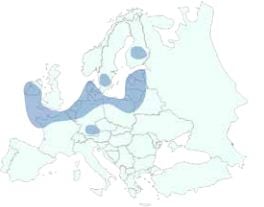According to the MTT Agrifood Research Finland report, Competitiveness of Northern European dairy chains, the removal of EU milk quotas next year will “speed up” the increasing geographical concentration of milk production in Northern European countries such as Germany, Denmark, Sweden, Poland, and the Baltic states.
Under the milk quota system, which was introduced in 1984 to address the problem of overproduction, each EU Member State has a national quota which it distributes to farmers. Whenever a member state exceeds its quota, it has to pay a penalty, called a super levy, to the EU.
The system is, however, set to be abolished in April 2015.
“The removal of milk quotas in a year will profoundly modify allocation of production volumes across EU countries, as the large effect of the reform of the EU sugar policy, which took place a few years ago, may suggest,” said the study.
“The quota abolition will speed up a broad process of structural change that has been ongoing for years, and increase the geographical concentration of agricultural production in Europe.”
The MTT study branded this geographical concentration the “milk production belt.”

Milk production belt
Financed by the Finnish Ministry of Agriculture and Forestry, the study involved a cross-country comparison of dairy supply chains in Finland, Sweden, Denmark, Germany, Poland, Estonia, Latvia and Lithuania.
The economic performance, productivity, foreign trade performance, growth, and innovation of dairy supply chains in the eight countries were analyzed.
Concluding, the study said a "milk production belt" has formed across Northern Europe as farmers in the centre of the region focus their efforts elsewhere.
“High grain and oilseed prices, and the resulting improved profitability of cash crop production, have attracted farmers in Central Europe to shift their focus to crop production,” said the report.
“Concurrently, a milk production belt has been forming in the Northern coastal regions of the EU stretching from Ireland through to Brittany, the Benelux countries, and as far as the Baltic states to the East.”
“Geographical specialization proceeds of course mainly in relative terms, with milk production gaining importance in coastal areas and crop production doing the same in Central Europe. This does not imply, however, the disappearance of milk farms outside of the ‘milk belt’, but production is increasingly shifting to this area within the continent.”
Click here for the full MTT report.
*Join us for our free online event, Beverage & Dairy Treatment 2014, on March 20 2014. The program starts at 10.15am New York time, 3.15pm in Paris, and explores process technologies including aseptic, ESL and HPP.
Exclusive webinars unite top consultants, suppliers such as GEA Procomac and Avure and brandowners including Coca-Cola Hellenic and Refresco Gerber. Click here to find out more and to register .
